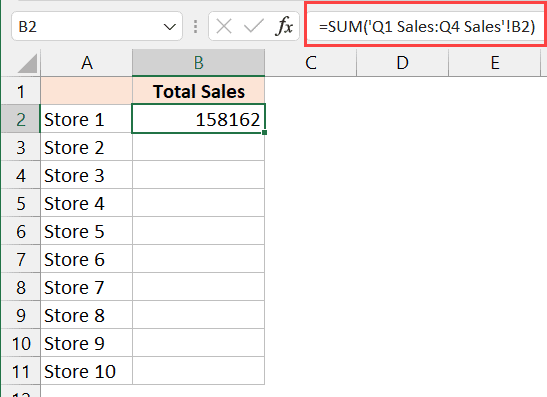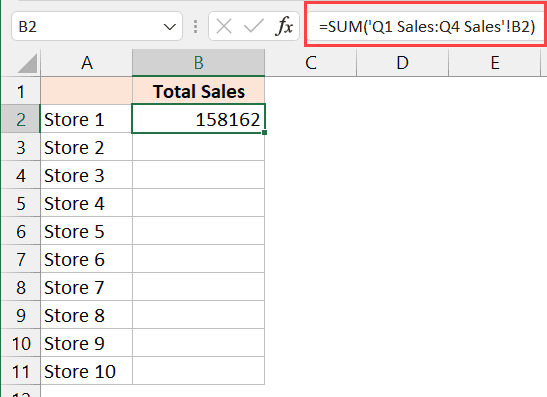5 Excel Hacks to Sum Across Sheets Easily

Excel Hacks to Sum Across Sheets Easily

When working with Microsoft Excel, especially on large datasets spread over multiple sheets, summarizing or consolidating data can be quite challenging. Fortunately, Excel offers several techniques and functions that can streamline this process, making it more efficient for users to analyze data from different sheets without manually entering each value. Here are five Excel hacks that will help you sum across sheets with ease:
1. Using 3D References

One of the most straightforward methods to sum data from multiple sheets is by using 3D references. This method is particularly useful when the structure of your workbook is uniform across the sheets.
- Select the cell where you want the sum to appear.
- Enter the SUM function with the range that spans across multiple sheets:
=SUM(Sheet1:Sheet3!A1)
This formula would sum the cell A1 from Sheet1, Sheet2, and Sheet3.
📝 Note: All sheets must have the same structure for this to work correctly.
2. Consolidate Data with PivotTable

If you need to summarize data not just for sums but also for other aggregate functions, PivotTables can be invaluable:
- Navigate to the Insert > PivotTable menu.
- In the Create PivotTable dialog, choose Multiple consolidation ranges.
- Select the ranges from different sheets you want to consolidate.
- Excel will create a PivotTable with the summarized data.
📝 Note: PivotTables are dynamic, allowing you to drill down into details or change the aggregation method easily.
3. Array Formulas for Dynamic Summation

For more flexibility in summing non-adjacent cells or dynamic ranges:
- Use the following array formula:
=SUM(Sheet1!A1:A10,Sheet2!B1:B10,Sheet3!C1:C10)
📝 Note: Array formulas can handle complex calculations but remember to use them cautiously as they can be heavy on resources.
4. Excel's Built-in Tools: Data Consolidate

The Data Consolidate feature allows for data consolidation with flexibility in terms of functions used:
- Go to Data > Consolidate.
- Choose the Sum function or other functions as needed.
- Select the range from each sheet you want to consolidate.
- The data will be summed and placed in the selected destination range.
📝 Note: This tool also lets you use other functions like Count, Average, Max, etc., for different needs.
5. Using INDIRECT Function

For when you need to reference sheet names dynamically:
- Type:
=SUM(INDIRECT(“‘”&A1&“’!A1”))
Where A1 contains the sheet name you want to sum from.
📝 Note: This method requires you to maintain a list of sheet names in cells for reference.
In summary, mastering these five Excel hacks for summing across multiple sheets can significantly enhance your data management capabilities. These methods not only save time but also reduce errors associated with manual data entry. Whether you prefer the straightforward approach of 3D references, the comprehensive functionality of PivotTables, or the dynamic power of array formulas, Excel provides multiple avenues to achieve efficient data consolidation. These techniques are essential for anyone who regularly works with extensive data sets across multiple worksheets, ensuring you can make informed decisions with ease.
Can 3D references handle non-uniform sheet structures?

+
No, 3D references work best when all sheets have the same structure. If structures vary, you might need to use other methods like array formulas or Data Consolidate.
How can I make my pivot table more dynamic for multi-sheet data?

+
You can use the GetPivotData function to create dynamic references to PivotTable results or adjust the data source for the PivotTable to include multiple sheets.
What are the performance implications of using array formulas?

+
Array formulas can be computationally intensive, potentially slowing down your workbook if used extensively or on large datasets. Use them where necessary and consider alternatives like helper columns for frequent calculations.